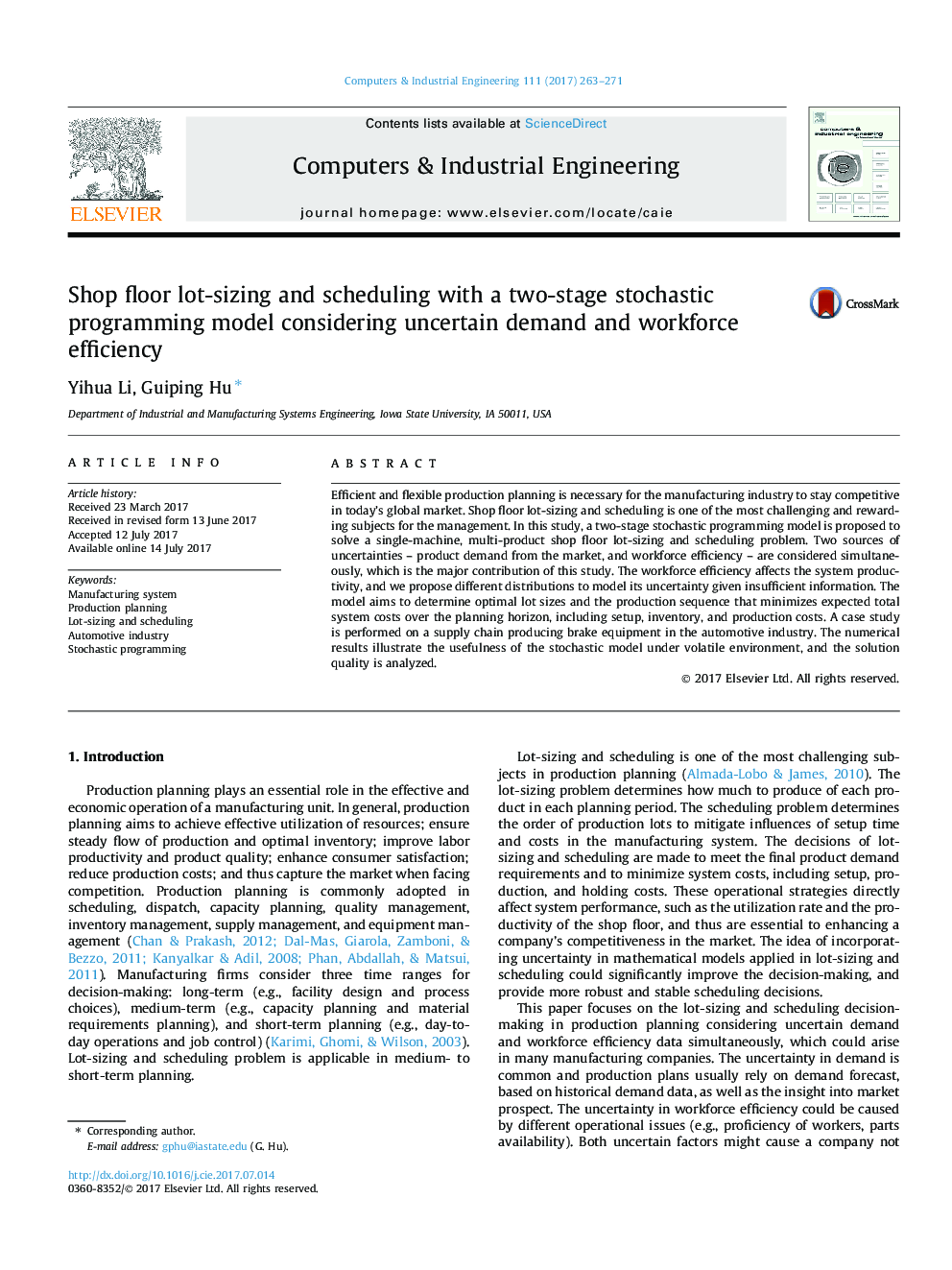| Article ID | Journal | Published Year | Pages | File Type |
|---|---|---|---|---|
| 5127610 | Computers & Industrial Engineering | 2017 | 9 Pages |
â¢A two-stage stochastic programming model for lot-sizing and scheduling is proposed.â¢Two uncertain factors, product demand and workforce efficiency are considered.â¢The numerical results of optimal production sequence and quantities are illustrated.â¢The significance of stochastic model is presented, and solution quality is analyzed.
Efficient and flexible production planning is necessary for the manufacturing industry to stay competitive in today's global market. Shop floor lot-sizing and scheduling is one of the most challenging and rewarding subjects for the management. In this study, a two-stage stochastic programming model is proposed to solve a single-machine, multi-product shop floor lot-sizing and scheduling problem. Two sources of uncertainties - product demand from the market, and workforce efficiency - are considered simultaneously, which is the major contribution of this study. The workforce efficiency affects the system productivity, and we propose different distributions to model its uncertainty given insufficient information. The model aims to determine optimal lot sizes and the production sequence that minimizes expected total system costs over the planning horizon, including setup, inventory, and production costs. A case study is performed on a supply chain producing brake equipment in the automotive industry. The numerical results illustrate the usefulness of the stochastic model under volatile environment, and the solution quality is analyzed.
